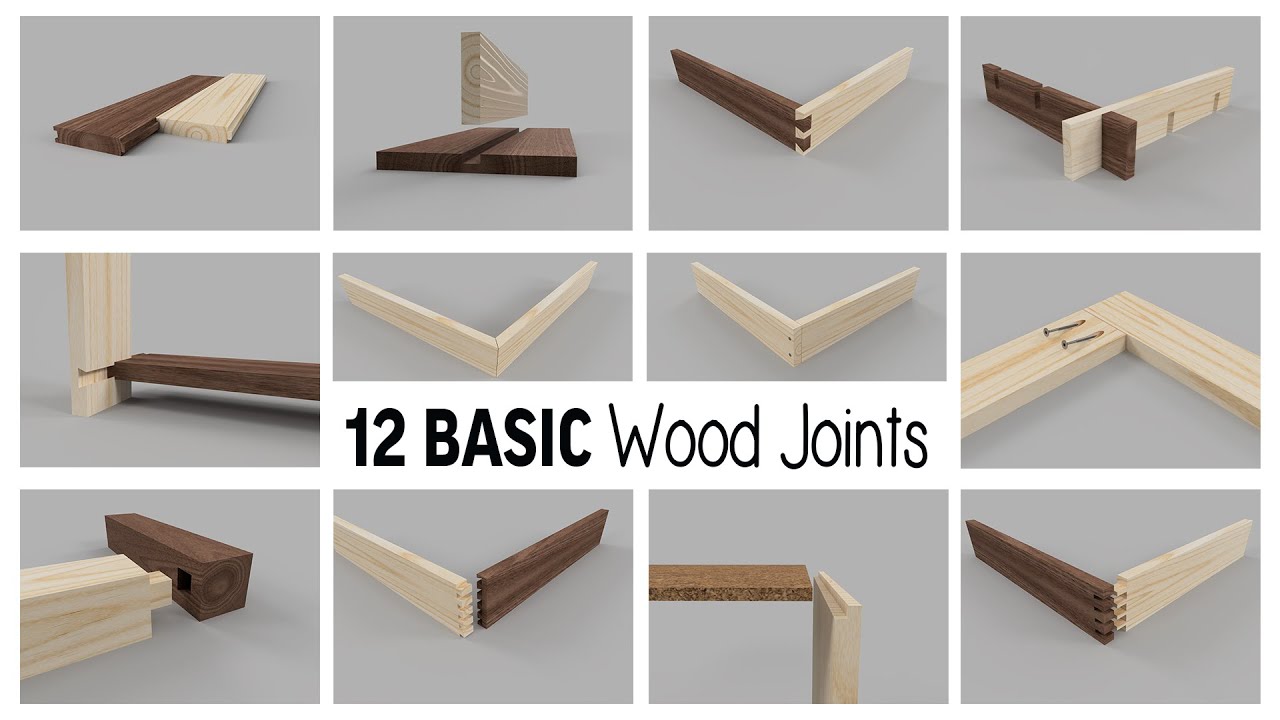woodworking training
“+10,000 Step By Step Plans …even if you don’t have a large workshop or expensive tools!“ Yes, Get Access To 12,000 shed Plans! 👈
[Music] there is no more basic wood joinery than the butt joint a butt joint is nothing more than when one piece of wood butts into another most often at a right angle or square to another board is fastened using mechanical fasteners this type of joint is often be used in wall framing on construction sites a mitered butt joint is nearly the same as a basic butt joint except the two boards are joint at an angle instead of square to one another the advantage is the miter joint will not show any end grain and is more aesthetically pleasing however the mitered butt joint isn’t all that strong a pocket hole involves cutting a slot and pre drilling a pilot hole at an angle between two boards before connecting the two with a screw this pre drilling needs to be very accurate so it’s typically accomplished by using a jig pocket joints work great for cabinet base frames and other similar applications where a lot of strength is not needed a dado is nothing more than a square groove slot on one board where another board will fit similar to tongue and groove joinery this is a commonly used wood join for connecting plywood such as building cabinetry another common would joint used in chemistry is the rabbit a rabbit is essentially a dado cut along the edge of a board rabbits are often used at the back of cabinets and other similar assemblies for attaching the back to the sides of the box adding a considerable amount of strength to the assembly a sliding dovetail is a versatile joint with a lot of possible uses a good way to think of it is as a locking dado the half lap joint is where half of each of the two boards being joined is removed since the two boards being joined together flush with one another this type of wood joint and obviously weaken the strength of the two adjoining boards but also is a stronger joint and bud joints there are a number of projects where this type of wood joint is quite desirable in spite of its drawbacks of all wood joinery methods the through dovetail may be the most revered a classic through dovetail is beautiful and very strong and adds a touch of class to any piece there are a few methods for creating through dovetails from hand cutting to machining with a jig there are situations where a dovetail joint is the connection of choice but both edges of the dovetail should not be visible perfect example is a drawer front where you don’t want to see the end of the three dovetail on the face of the drawer for this type of joint the best choice is a half-blind dovetail [Music] the pill joints are beautiful and strong but not always practical a box joint is a simpler alternative to dovetail joints [Music] a mortise and tenon is a classic wood joinery method these joints have been used since the early times of woodworking and are still among the strongest and most elegant methods for joining wood [Music] when joining two words squared to one another along a long edge one can simply but the joint together and hold it with fasteners however the tongue and groove joint is much stronger and provides more adjoining surface areas which is particularly useful if you’re going to glue the joint another method for joining boards along the edges like the tongue and groove joint is to cut slots and use beechwood wafers known as a biscuit to hold the boards in place this is a very useful modern woodworking joint particularly for creating tabletops relying on glue and the swelling of the beechwood biscuit to hold the boards in place [Music] …
“+10,000 Step By Step Plans …even if you don’t have a large workshop or expensive tools!“ Download Today! 👈
